Audit-Pedia
by CA Kamal GargCONTENTS AT A GLANCE
| Bharat? | 5 |
| Preface | 7 |
| Topic Wise Index | 15 |
| Detailed Contents | 21 |
| Chapter 1 True and Fair View 1 | |
| Chapter 2 Materiality | 3 |
| Chapter 3 Going Concern | 6 |
| Chapter 4 Emphasis of Matter (EOM) | 8 |
| Chapter 5 Audit Risk | 10 |
| Chapter 6 Independence | 13 |
| Chapter 7 Assertions | 16 |
| Chapter 8 Audit Documentation or Audit File or Working Papers | 19 |
| Chapter 9 Professional Skepticism | 21 |
| Chapter 10 Internal Control | 23 |
| Chapter 11 Audit Evidence | 26 |
| Chapter 12 Related Parties | 28 |
| Chapter 13 Fraud | 31 |
| Chapter 14 Sampling | 34 |
| Chapter 15 Analytical Procedures | 37 |
| Chapter 16 Test of Controls | 40 |
| Chapter 17 Test of Details | 42 |
| Chapter 18 External Confirmations | 43 |
| Chapter 19 Written Representations | 45 |
| Chapter 20 Subsequent Events | 47 |
| Chapter 21 Comparative Information | 50 |
| Chapter 22 Opening Balances | 55 |
| Chapter 23 Audit of Accounting Estimates | 58 |
| Chapter 24 Management Bias | 60 |
| Chapter 25 Using the Work of an Auditor's Expert | 62 |
| Chapter 26 Management's Expert | 64 |
| Chapter 27 Using the Work of another Auditor | 66 |
| Chapter 28 Using the Work of Internal Auditors | 69 |
| Chapter 29 Audit Committee under Companies Act, 2013 | 71 |
| Chapter 30 Communication with those Charged with Governance (TCWG) and Management | 73 |
| Chapter 31 Joint Audit | 75 |
| Chapter 32 Unqualified (Clean) Audit Report | 77 |
| Chapter 33 Qualified Audit Report | 79 |
| Chapter 34 Adverse Audit Report | 81 |
| Chapter 35 Disclaimer of Opinion | 84 |
| Chapter 36 Emphasis of Matter Paragraph | 86 |
| Chapter 37 Other Matter Paragraph | 88 |
| Chapter 38 Key Audit Matters (KAMs) | 90 |
| Chapter 39 The Auditor's Responsibilities Relating to Other Information (SA 720 - Revised) | 92 |
| Chapter 40 Professional Judgment | 96 |
| Chapter 41 Premise | 99 |
| Chapter 42 Risk of Material Misstatement | 101 |
| Chapter 43 Applicable Financial Reporting Framework | 103 |
| Chapter 44 Experienced Auditor | 105 |
| Chapter 45 Misstatement | 107 |
| Chapter 46 Clearly Trivial Misstatements | 110 |
| Chapter 47 Materiality in the Context of an Audit | 112 |
| Chapter 48 Materiality and Audit Risk | 115 |
| Chapter 49 Benchmarking | 188 |
| Chapter 50 Cut-off Procedures | 120 |
| Chapter 51 Substantive Analytical Procedures | 122 |
| Chapter 52 Compliance Procedures and Substantive Procedures | 124 |
| Chapter 53 Sufficient and Appropriate Audit Evidence | 126 |
| Chapter 54 Types of Audit Evidence | 128 |
| Chapter 55 Corroborative Audit Evidence | 130 |
| Chapter 56 Risk Assessment Procedures | 132 |
| Chapter 57 Audit Planning and Audit Strategy | 134 |
| Chapter 58 Audit Programme | 137 |
| Chapter 59 Planning Activities | 139 |
| Chapter 60 Internal Check | 141 |
| Chapter 61 Nature, Timing, and Extent of Audit Procedures | 143 |
| Chapter 62 Permanent File and Current File in Audit Documentation | 145 |
| Chapter 63 Assertions | 147 |
| Chapter 64 Engagement Team, Firm, and Personnel | 149 |
| Chapter 65 Network and Network Firm | 151 |
| Chapter 66 Engagement Quality Control Review | 153 |
| Chapter 67 Elements of a System of Quality Control | 155 |
| Chapter 68 Engagement Partner and Key Audit Partner Rotation Requirements | 157 |
| Chapter 69 Leadership Responsibilities for Quality within the Firm | 159 |
| Chapter 70 Ethical Requirements and Independence | 161 |
| Chapter 71 Acceptance and Continuance of Client Relationships and Audit Engagements | 163 |
| Chapter 72 Human Resources | 165 |
| Chapter 73 Engagement Performance | 167 |
| Chapter 74 Monitoring under SQC 1 | 169 |
| Chapter 75 Complaints and Allegations under SQC 1 | 171 |
| Chapter 76 Engagement Partner Responsibility | 173 |
| Chapter 77 Differences of Opinion within the Engagement Team | 176 |
| Chapter 78 Engagement Documentation | 178 |
| Chapter 79 Engagement Partner Change During an Ongoing Audit | 180 |
| Chapter 80 Quality Control Manual | 182 |
| Chapter 81 Letter of Engagement | 184 |
| Chapter 82 Recurring Audits | 185 |
| Chapter 83 Letter of Weakness | 186 |
| Chapter 84 Audit Considerations Relating to an Entity Using a Service Organisation | 187 |
| Chapter 85 Assurance Reports on Controls at a Service Organisation | 189 |
| Chapter 86 Audits of Financial Statements Prepared in Accordance with Special Purpose Frameworks | 191 |
| Chapter 87 Audits of Single Financial Statements and Specific Elements, Accounts or Items of a Financial Statement | 193 |
| Chapter 88 Engagements to Report on Summary Financial Statements | 195 |
| Chapter 89 Review Engagements | 197 |
| Chapter 90 Contradictory Evidence | 200 |
| Chapter 91 Compilation Engagements | 201 |
| Chapter 92 Agreed-Upon Procedures Engagements | 202 |
| Chapter 93 Walkthrough Procedures | 203 |
| Chapter 94 Vouching v Verification | 204 |
| Chapter 95 Audit Trail | 206 |
| Chapter 96 Surprise Check | 207 |
| Chapter 97 Examination in Depth | 208 |
| Chapter 98 Computer-Assisted Audit Techniques (CAATs) | 209 |
| Chapter 99 IT Controls | 210 |
| Chapter 100 Entity Level Controls (ELCs) | 211 |
| Chapter 101 Transaction Level Controls (TLCs) | 212 |
| Chapter 102 Reasonable Assurance | 213 |
| Chapter 103 Absolute Assurance | 215 |
| Chapter 104 Moderate Assurance | 217 |
| Chapter 105 Financial Statements | 219 |
| Chapter 106 Historical Financial Information | 221 |
| Chapter 107 Purpose and Objective of Audit | 223 |
| Chapter 108 Audit and Auditor | 224 |
| Chapter 109 Magnitude | 226 |
| Chapter 110 General Purpose Financial Statements | 228 |
| Chapter 111 Terms of the Audit Engagement | 230 |
| Chapter 112 Non-Compliance with Laws and Regulations | 232 |
| Chapter 113 Information and Explanations | 234 |
| Chapter 114 Necessary for the Purpose of His Audit | 237 |
| Chapter 115 Sought and Obtained All the Information and Explanations | 239 |
| Chapter 116 Uncorrected Misstatements | 241 |
| Chapter 117 Undetected Misstatements | 243 |
| Chapter 118 Deficiency in Internal Control | 245 |
| Chapter 119 Significant Deficiency in Internal Control | 246 |
| Chapter 120 Business Risk | 248 |
| Chapter 121 Significant Risk | 249 |
| Chapter 122 Sampling Risk | 250 |
| Chapter 123 Population | 251 |
| Chapter 124 Anomaly | 252 |
| Chapter 125 Non-Sampling Risk | 253 |
| Chapter 126 Sampling Unit | 254 |
| Chapter 127 Statistical Sampling | 255 |
| Chapter 128 Stratification | 256 |
| Chapter 129 Tolerable Misstatement | 257 |
| Chapter 130 Tolerable Rate of Deviation | 258 |
| Chapter 131 Roll Forward and Roll Backward Procedures | 259 |
| Chapter 132 Physical Inventory Count | 262 |
| Chapter 133 Non-Responses in External Confirmations | 265 |
| Chapter 134 Addressing Doubts on the Reliability of Confirmation Responses | 267 |
| Chapter 135 Oral Responses to Confirmation Requests | 269 |
| Chapter 136 Predecessor Auditor | 270 |
| Chapter 137 Plausible Relationships Among Financial and Non-Financial Data | 271 |
| Chapter 138 Additional v Alternative Audit Procedures | 272 |
| Chapter 139 Projecting Misstatements | 273 |
| Chapter 140 Auditor's Point Estimate or Range | 274 |
| Chapter 141 Estimation Uncertainty | 275 |
| Chapter 142 Management's Point Estimate | 276 |
| Chapter 143 Outcome of an Accounting Estimate | 277 |
| Chapter 144 Mitigating Factors (Going Concern) | 278 |
| Chapter 145 Material Uncertainty for Going Concern | 279 |
| Chapter 146 Indicators for Going Concern | 280 |
| Chapter 147 Appropriateness or Inappropriateness of Going Concern 281 | |
| Chapter 148 Safeguards - Managing Threats to Compliance with Fundamental Principles | 282 |
| Chapter 149 Threats to Independence | 284 |
| Chapter 150 Public Interest Entity (PIE) | 286 |
| Chapter 151 NOCLAR - Non-Compliance with Laws and Regulations | 288 |
| Chapter 152 Risk Control Matrix (RCM) | 291 |
| Chapter 153 Sign-off | 296 |
| Chapter 154 Ticking, Tagging and Tracing | 299 |
About the Author
Have Questions About This Book?
Our course advisors are here to help you make the right decision for your career growth.
Other books
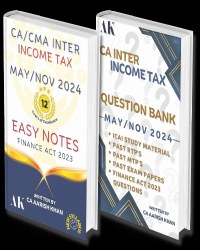
CA/CMA INTER COMBO - COLOURED EASY NOTES + QUESTION BANK
CA Aarish Khan
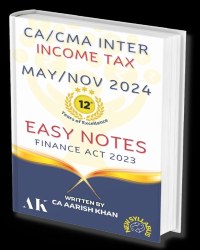
CA/CMA INTER EASY NOTES COLOURED
CA Aarish Khan
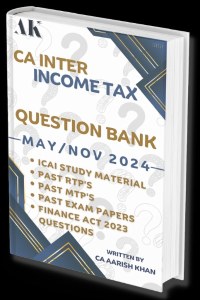
CA/CMA INTER INCOME TAX QUESTION BANK
CA Aarish Khan

GST (IDT) Book - 4th Edition | May, Sept 2026 & Jan 2027 Attempt
CA Arpita Tulsyan
Join Us !!
List your Books
Share your knowledge and help shape the next generation of tech-savvy CA & Tax professionals while building a rewarding career in education.
Get Started

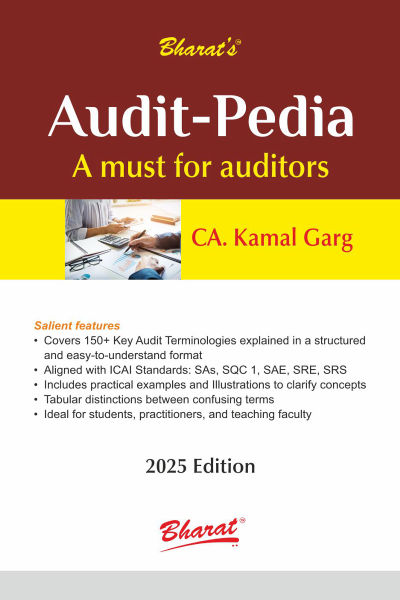
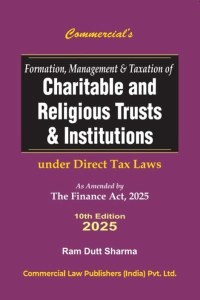
 CAclubindia
CAclubindia
